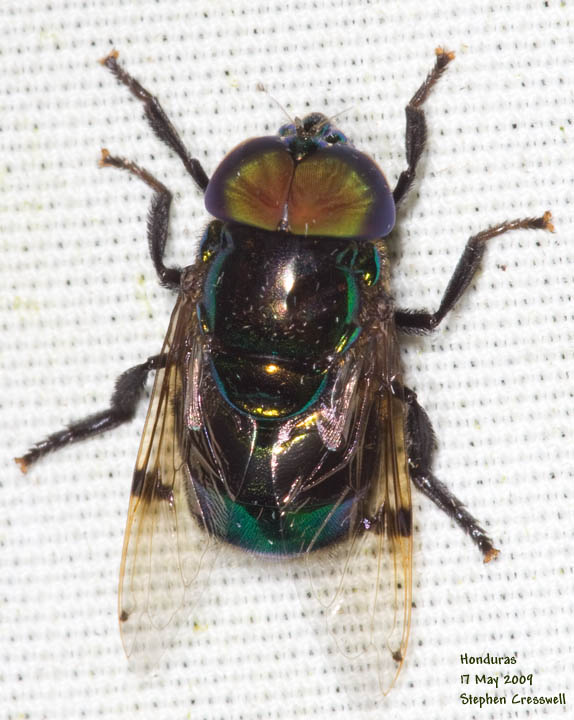Diptera.info :: Family forums :: Syrphidae
|
Honduras fly, odd green color
|
|
| Stephen |
Posted on 02-02-2011 11:30
|
|
Member Location: West Virginia USA Posts: 1322 Joined: 12.04.05 |
My notes indicate this fly appeared mostly green, but the flash changed its appearance so that less green shows. 17 May 2009, Pico Bonito National Park, Honduras, open area near forest, at lights. Calliphoridae? Stephen attached the following image:  [96.75Kb] --Stephen Stephen Cresswell www.americaninsects.net |
| rvanderweele |
Posted on 02-02-2011 12:27
|
|
Member Location: Leiden, the Netherlands Posts: 1988 Joined: 01.11.06 |
Looks like a Syrphidae
ruud van der weele rvanderweele@gmail.com |
|
|
|
| Paul Beuk |
Posted on 02-02-2011 12:56
|
|
Super Administrator Location: Netherlands Posts: 19403 Joined: 11.05.04 |
Syrphidae: Ordinia sp.
Paul - - - - Paul Beuk on https://diptera.info |
| Stephane Lebrun |
Posted on 02-02-2011 20:25
|
|
Member Location: Le Havre, France Posts: 8248 Joined: 03.03.07 |
Ornidia 
Stephane. |
|
|
|
| Stephen |
Posted on 02-02-2011 21:52
|
|
Member Location: West Virginia USA Posts: 1322 Joined: 12.04.05 |
I believe that is the heaviest-looking, least aerodynamic Syrphid I have ever seen. Ruud, Paul, Stephane, thank-you! --Stephen Stephen Cresswell www.americaninsects.net |
| Menno Reemer |
Posted on 04-02-2011 11:11
|
|
Member Location: Posts: 343 Joined: 10.06.04 |
Most likely candidate is O. obesa, because of the undivided groove on the scutellum. This is more or less the most common syrphid in the Neotropics. However, recently O. therezinzae was described from Brazil. This species is very similar and can only be told apart by the colour of the coxae, which are not visible in this picture. By the way, despite its not so aerodynamic appearance, this species is a very strong and swift flyer! |
|
|
|
| Jump to Forum: |













